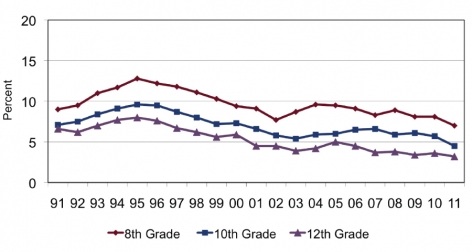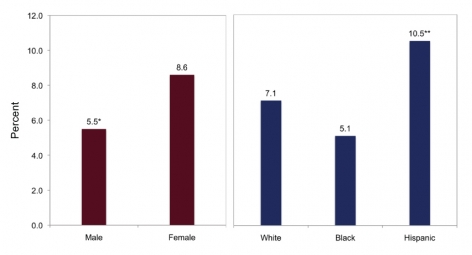How are inhalants used?
Inhalants can be breathed in through the nose or the mouth in a variety of ways, such as—
- "sniffing" or "snorting" fumes from containers;
- spraying aerosols directly into the nose or mouth;
- "bagging" — sniffing or inhaling fumes from substances sprayed or deposited inside a plastic or paper bag;
- "huffing" from an inhalant-soaked rag stuffed in the mouth; and
- inhaling from balloons filled with nitrous oxide.
 Source: University of Michigan, 2011 Monitoring the Future Study
Source: University of Michigan, 2011 Monitoring the Future StudyInhaled chemicals are absorbed rapidly into the bloodstream through the lungs and are quickly distributed to the brain and other organs. Within seconds of inhalation, the user experiences intoxication along with other effects similar to those produced by alcohol. Alcohol-like effects may include slurred speech; the inability to coordinate movements; euphoria; and dizziness. In addition, users may experience lightheadedness, hallucinations, and delusions.
 *Level of significance of difference between Male and Female = .05
*Level of significance of difference between Male and Female = .05** Level of significance of difference between Whites and Hispanics and Blacks and Hispanics = .001
Source: University of Michigan, 2011 Monitoring the Future Study
Because intoxication lasts only a few minutes, abusers frequently seek to prolong the high by inhaling repeatedly over the course of several hours, which is a very dangerous practice. With successive inhalations, abusers can suffer loss of consciousness and possibly even death. At the least, they will feel less inhibited and less in control. After heavy use of inhalants, abusers may feel drowsy for several hours and experience a lingering headache.


